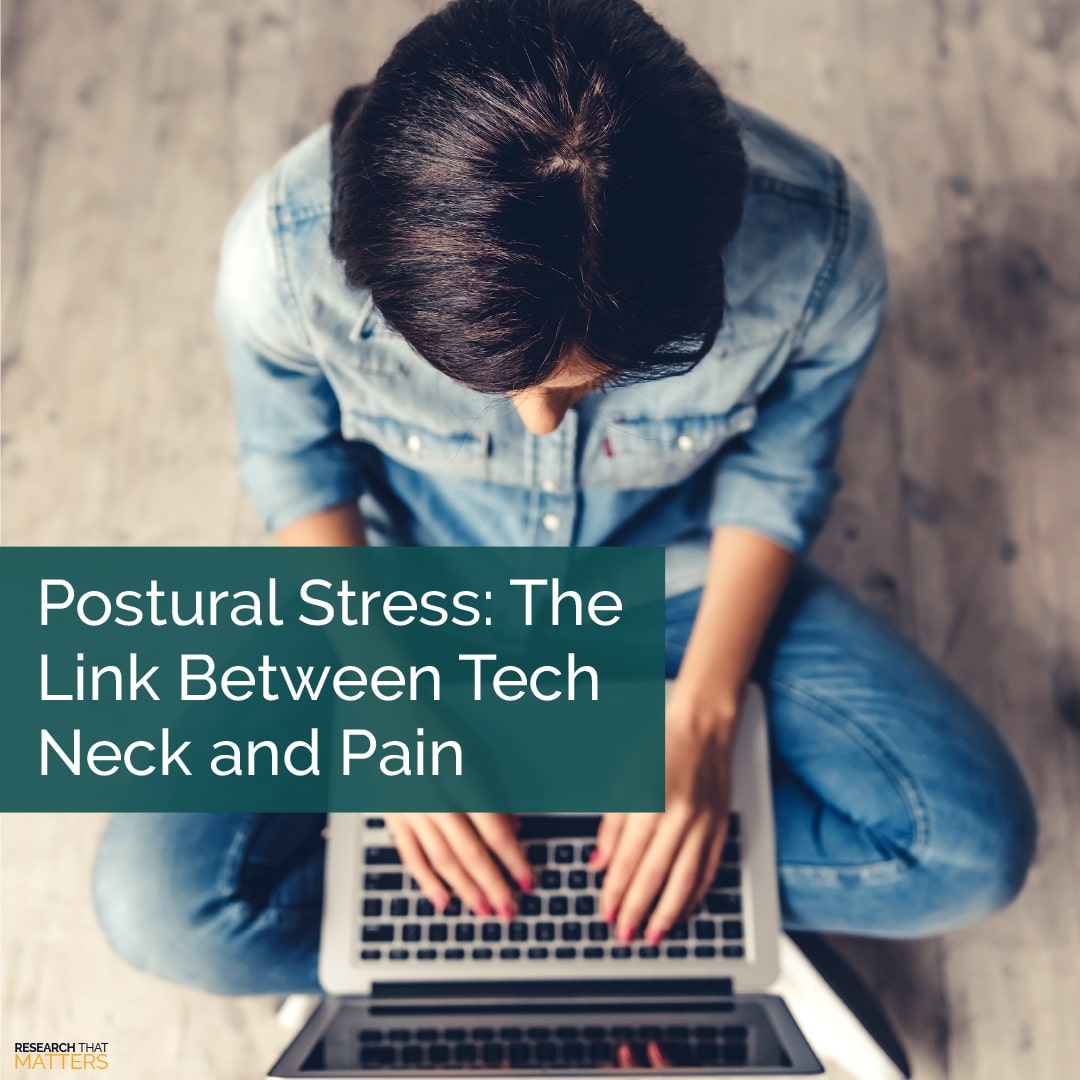
Bottom Line:
While it’s true that your anatomy can contribute to the levels of postural stress you experience, so can many of the small decisions you make each day.
You’ve probably seen an article or two floating around the web about the relationship between tech neck and pain.
You may have even seen an uptick in commercials for neck pain treatment in Santa Fe, and for good reason
Did you know that many of us spend 2 hours or more per day on our smartphones and 5 hours or more on our computers?
That adds up to thousands of hours year after year after year of you keeping your neck “stuck” in an awkward position!
Take a moment right now and check…
Is your head creeping forward as you read this?
If your chin is tucked down and your ears are in front of your shoulders, you’re in the forward head posture we mentioned earlier called tech neck.
You may have also heard this posture referred to as “text neck.”
Driving a car, working on the computer, and using a tablet or phone all usually result in this less-than-ideal posture.
And over the past few years, the number of people experiencing headaches and tech neck and pain has exploded.
Why it Matters:
Let’s take a closer look at how tech neck and pain are related.
The average human head weighs about 8-11 pounds.
Every day, you’re effectively walking around with a bowling ball (your head) balancing on a toothpick (your neck).
Even under the best circumstances, this places a lot of stress on our spine.
Holding up your head may not seem like a lot, but the 7 bones and 20 muscles of your neck have to work together in perfect harmony to balance that weight so you can move your head around free of pain.
Ideally, you want your ears in line with your shoulders (when your shoulders are pulled back).
It’s estimated that tilting your head forward, even just 15 degrees, can increase the weight of your head on your neck by over 3X.
Tilting your head forward 60 degrees can nearly 10X the stress and strain on your neck.
That stress can add up and result in your neck not moving correctly.
We’re talking stiffness, dysfunction, headaches, and more.
We’re talking about the development of tech neck and pain, and that can leave you looking for neck pain treatment in Santa Fe.
To recap…
- Tech neck is the term used to describe the flexed head and neck position when looking down at your smartphone.
- Even 15 degrees of forward bending (flexion) can increase the stress of your head on your neck by 3X.
- Look up taking breaks every 15 minutes and looking up for your phone or tablet can help your body reset and give your muscles a chance to relax.
Next Steps:
Reducing the symptoms of tech neck and pain is more than merely changing the angle of how you look at your phone.
The good news is that being proactive and making a few simple changes to your routine can help you reduce your risk of experiencing pain.
Improving your ergonomics, stretching each day, and receiving periodic spinal adjustments can help you combat the effects of tech neck.
Take a moment today to check your posture.
Be sure to stretch if you notice your shoulders are rounding, your head has moved forward, and your upper back is hunched over.
And if you see yourself regularly slouching into this posture, let us know – especially if tech neck and pain are getting in the way of you enjoying your life.
Before you can start to improve your posture, you have to know what proper posture looks like and perhaps, more importantly, how to maintain it.
That’s where we come in.
From evaluation to adjustments to at home stretches and exercises, our team has the expertise to help you correct your posture and overcome your tech neck and pain.
By reducing the stress on your neck, you can look forward to many years of continuing to enjoy your smart devices without pain and discomfort!
It all starts with a click or a call.
Schedule a consultation with us for neck pain treatment in Santa Fe today to get started.
Science Sources:
“Tech Neck” Taking a Toll on Posture. Columbia Spine. 2018.
How to Prevent Neck and Back Pain Working From Home. Health Matters. 2020.

Jun 22, 2022 at 3:28 PM
I had this problem and shared it with Dr Fisk. I am still trying hard to keep doing what he has written in this article. I t is more difficult I find in the garden to avoid dropping my head so still suffering but less as I am more aware of his answers re computer work and even sitting.